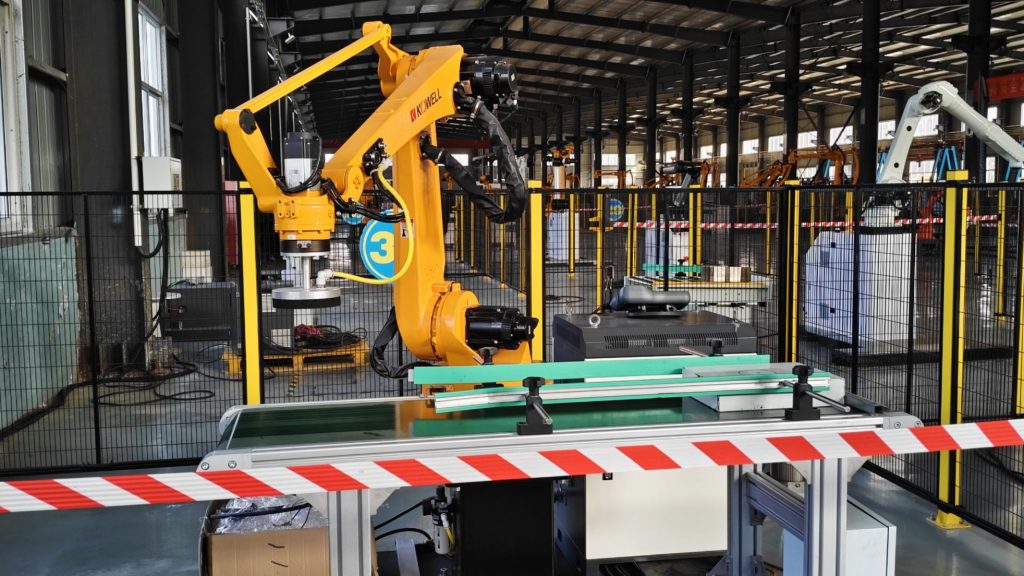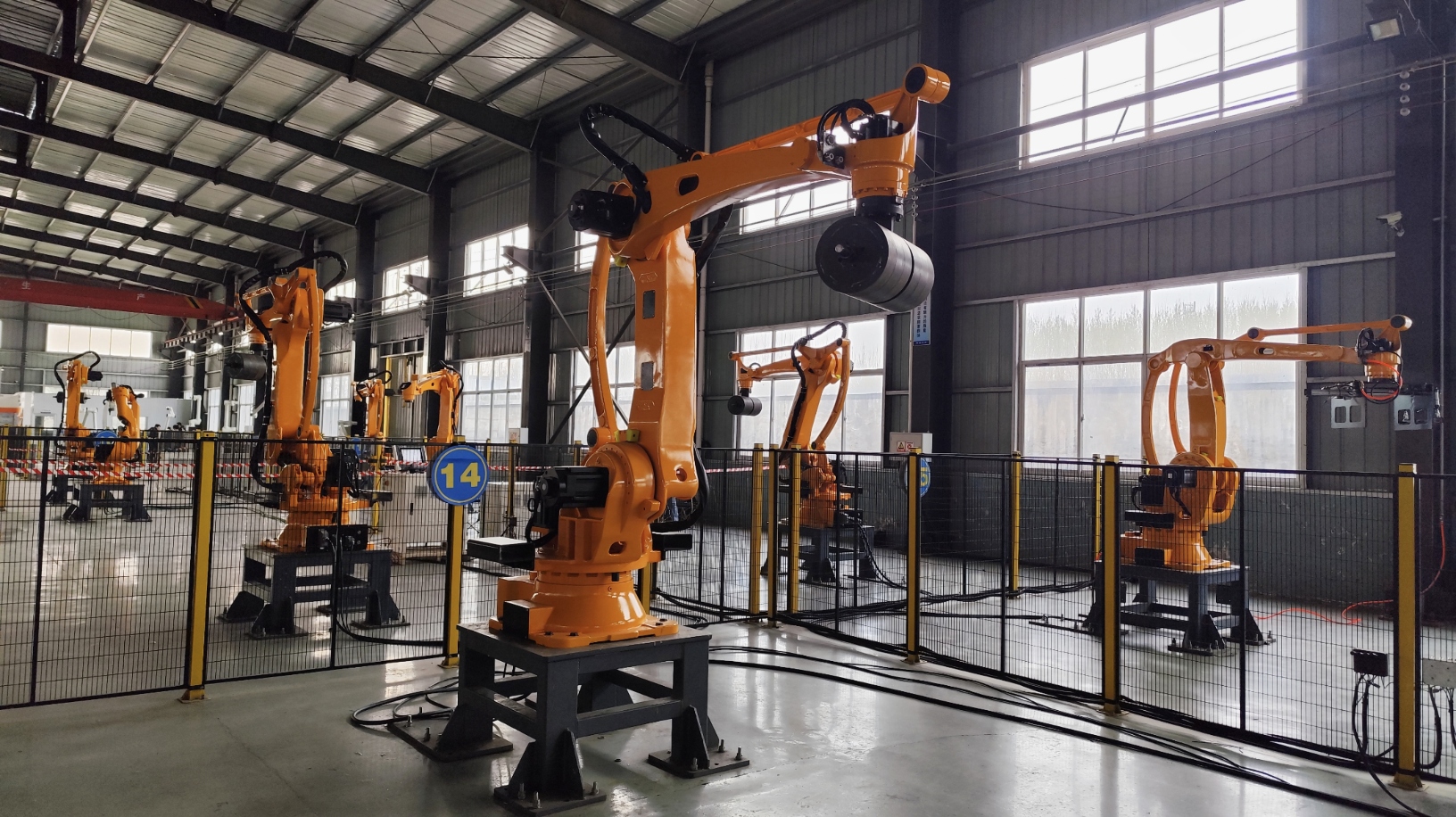In modern manufacturing, the palletizing link at the end of the production line is not only the end of material handling, but also a key link to ensure product circulation efficiency and optimize the production rhythm. Traditional manual palletizing methods often face problems such as high labor intensity, unstable efficiency, and low space utilization, and the introduction of palletizing workstations is gradually changing this situation. Through high-standard stacking strategies, highly collaborative operation modes, and seamless docking with production lines, the palletizing workstation at the end of the production line is becoming an important support for enterprises to improve operating efficiency.
The optimization effect of the palletizing workstation at the end of the production line is mainly reflected in the following aspects:
1.Improve production continuity
The palletizing workstation can synchronize with the rhythm of the production line to achieve seamless connection from off-line to stacking of products, avoiding production line blockage or rhythm disorder caused by manual handling. This efficient connection ensures the continuity of the production process and improves overall operating efficiency.
2.Reduce handling errors and improve stability
The high-standard control system of the palletizing manipulator can ensure that each product is accurately stacked in the set manner, avoiding problems such as skew and dumping that may be caused by manual operation. Especially when dealing with irregular shapes or multi-specification products, the automatic adjustment capability of the palletizing workstation significantly improves the palletizing quality.
3.Optimize space utilization
Traditional manual palletizing is often limited in height due to human operation errors, while the automated palletizing workstation can perform high-density and high-precision stacking according to the set logic, so that the storage and transportation space can be utilized.
4.Flexible adaptation to multiple production modes
In modern manufacturing, there are many types of products and changing order requirements, and the production rhythm needs to be more flexible. The palletizing workstation at the end of the production line can adapt to the palletizing needs of different products through programmable control and rapid changeover capabilities, reduce adjustment time, and improve production flexibility.

In order to better optimize the production rhythm, the palletizing workstation at the end of the production line relies on accurate control, flexible scheduling and efficient operation mode to achieve stable and efficient operation.
1.High standard palletizing strategy
The palletizing workstation at the end of the production line is based on the programming of the previous system and cooperates with the needs of the production line to perform reasonable stacking methods to ensure that the products are placed stably, reduce space waste, and ensure the convenience of handling and storage.
2.Multi-machine collaborative operation
In a high-intensity production environment, multiple palletizing robots can work together to reasonably allocate tasks according to the production plan, avoid excessive single-point load, and improve the stability of the overall production rhythm.
3.Seamless connection with the conveying system
The palletizing workstation at the end of the production line can be directly connected to the production line conveying system to achieve automatic flow from product offline to palletizing, reduce the uneven rhythm caused by human intervention, and improve overall operational efficiency.
The wide application of palletizing workstations has brought considerable competitiveness to enterprises, especially in improving production efficiency, optimizing resource allocation and reducing labor costs.
1.Reduce manual dependence and improve production safety
Traditional manual palletizing has high work intensity and is prone to fatigue and work-related accidents. The application of palletizing workstations greatly reduces manual participation and improves the safety of the working environment.
2.Improve product consistency and reduce losses
Automated palletizing can ensure that products are neatly placed and templated, avoid damage and errors caused by manual operation, and improve the rate of excellent products.
3.Assisting in the construction of smart factories
As an important part of modern manufacturing, the palletizing workstation not only improves the efficiency of a single link, but also promotes the automation and digitalization of the entire production system, providing strong support for the optimization of the company's production model.
In the future, with the further development of automatic control technology, the palletizing workstation at the end of the production line will have stronger adaptability, higher standard operation methods and more efficient collaboration capabilities, helping manufacturing companies move towards a higher level of automated production mode.
The palletizing workstation at the end of the production line is not only the end point of material handling, but also a key link in optimizing the rhythm of the production line and improving operational efficiency. Through high-standard stacking, collaborative relay and continuous optimization of operation strategies, the palletizing workstation is creating a more efficient and stable production environment for manufacturing companies. In the future, with the continuous evolution of technology, its application scenarios and value will be further expanded, providing strong support for the continuous upgrading of the manufacturing industry.

Hello, the current customer service is offline. You can leave your contact information and the staff will respond to you as soon as possible!